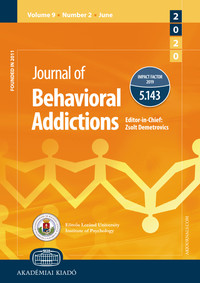The mediation role of work-life balance stress and chronic fatigue in the relationship between workaholism and depression among Chinese male workers in Hong Kong
The mediation role of work-life balance stress and chronic fatigue in the relationship between workaholism and depression among Chinese male workers in Hong Kong
Author(s): Xue Yang, Dan Qiu, Mason C. M. Lau, Joseph T.F. LauSubject(s): Behaviorism
Published by: Akadémiai Kiadó
Keywords: work addiction; work-life balance stress; fatigue; depression; male workers
Summary/Abstract: Few studies have tested the underlying mechanisms in the association between workaholism and depression. This study aims to investigate the potential mediation effects of work-life balance stress and chronic fatigue and depression among Chinese male workers in Hong Kong. Methods. A population-based study among male workers in Hong Kong (n = 1,352) was conducted. The self-reported scales of assessing workaholism, work-life balance stress, chronic fatigue and depressive symptoms were included in the questionnaire. Path analysis was conducted to test the proposed mediation model. Results. Workaholism was directly and indirectly associated with depression through work-life balance stress and chronic fatigue, respectively. The association between work-life balance stress and chronic fatigue was statistically significant in the correlation analysis but not in the path analysis. As high as 30.5% of the participants were classified as having probable chronic fatigue, while 8.4% of the participants were classified as having probable depression. Discussion. Workaholism is a stressor that may induce negative consequences on well-being and health among male workers in Hong Kong. Interventions to help workers with time and stress management and fatigue reduction may be beneficial for their mental health. Theoretical and practical implications are discussed.
Journal: Journal of Behavioral Addictions
- Issue Year: 9/2020
- Issue No: 2
- Page Range: 483-490
- Page Count: 8
- Language: English

